Lake Huron’s 9 Aquaculture Farms Drawn Into Michigan Legislative Furor
Ontario and Michigan express caution about expansions.
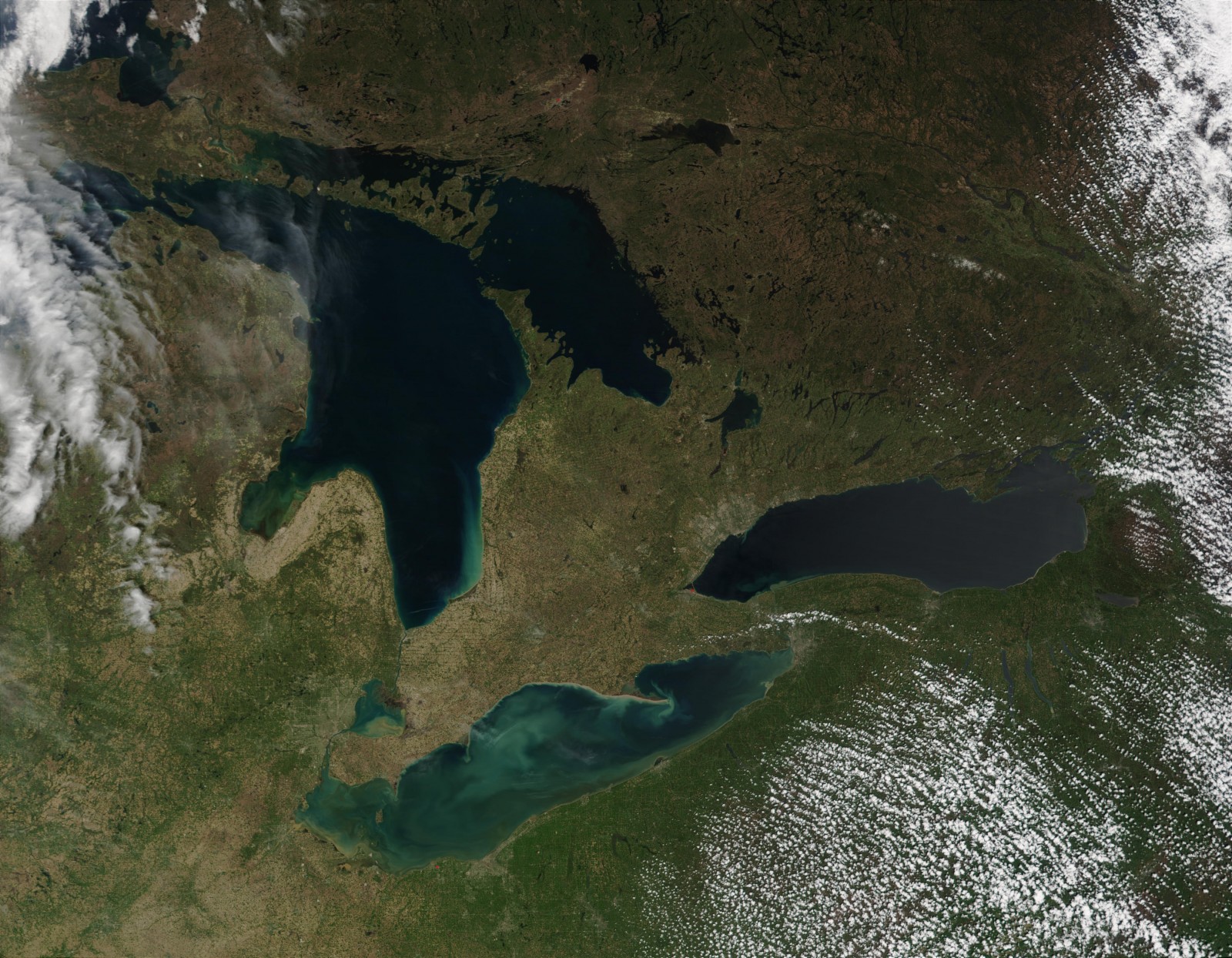
The nine aquaculture facilities in the Ontario waters of Lake Huron are the only fish farms operating in the Great Lakes. Photo courtesy MODIS / NOAA Great Lakes Environmental Research Laboratory via Flickr Creative Commons
By Codi Kozacek
Circle of Blue
Beneath the waters of North Channel, a slice of Lake Huron squeezed between mainland Ontario and Manitoulin Island, grids of underwater nets at nine facilities grow 8,000 metric tons of rainbow trout each year. These net-pens are the only commercial fish farms operating in the open waters of the Great Lakes. They are drawing increased public scrutiny as a legislative battle over aquaculture develops across the border in Michigan.
A series of eight bills, six in favor of aquaculture in the Great Lakes and two opposed, were introduced in the Michigan legislature over the past eight months. The flurry of lawmaking was touched off by two proposals to farm fish in the Michigan waters of the Great Lakes, a notion that a state task force recommended the state not pursue earlier this year. Currently, no aquaculture facilities are licensed in the U.S. waters of the lakes, and they are illegal according to Michigan law. The bills, all of which are pending in committee, could change that.
The prospect of Great Lakes aquaculture arises at a time when Michigan is reshaping its economy and trying to restore its “Pure Michigan” brand.
If the Great Lakes restriction is loosened, it could pave the way for a robust Michigan aquaculture industry, one that could eventually generate $US 1 billion annually, and employ as many as 17,200 people according to a 2014 strategic plan released by researchers at Michigan State University and the Michigan Aquaculture Association. Reaching that goal would mean producing approximately 225,000 metric tons of seafood annually, according to the report. While the plan envisions a variety of land and water-based aquaculture systems, net-pen operations in the Great Lakes, using underwater nets to contain thousands of fish, would be a crucial component.
Strong public opposition, however, has hindered industry expansion in the Great Lakes on both sides of the border. Most centers on concerns about pollution from the farms, such as excessive phosphorus discharges that could cause algal blooms, and fears that raising so many fish in tight quarters could spread disease to wild populations. Michigan legislation in favor of growing the aquaculture industry, however, argues that these risks can be mitigated with careful regulation, monitoring, and a conservative pace of development.
Support for a clean and healthy Great Lakes ecosystem is widespread, crossing partisan lines and international divides. Eight-five percent of people living in the basin, both in Canada and the United States, feel it is essential to protect the Great Lakes from pollution, invasive species, and other threats, according to a survey of nearly 4,000 residents released by the International Joint Commission earlier this month. The poll found that 86 percent of respondents feel it is important to protect the lakes for recreation, while 76 percent think the lakes should be protected for the benefit of fish and wildlife.
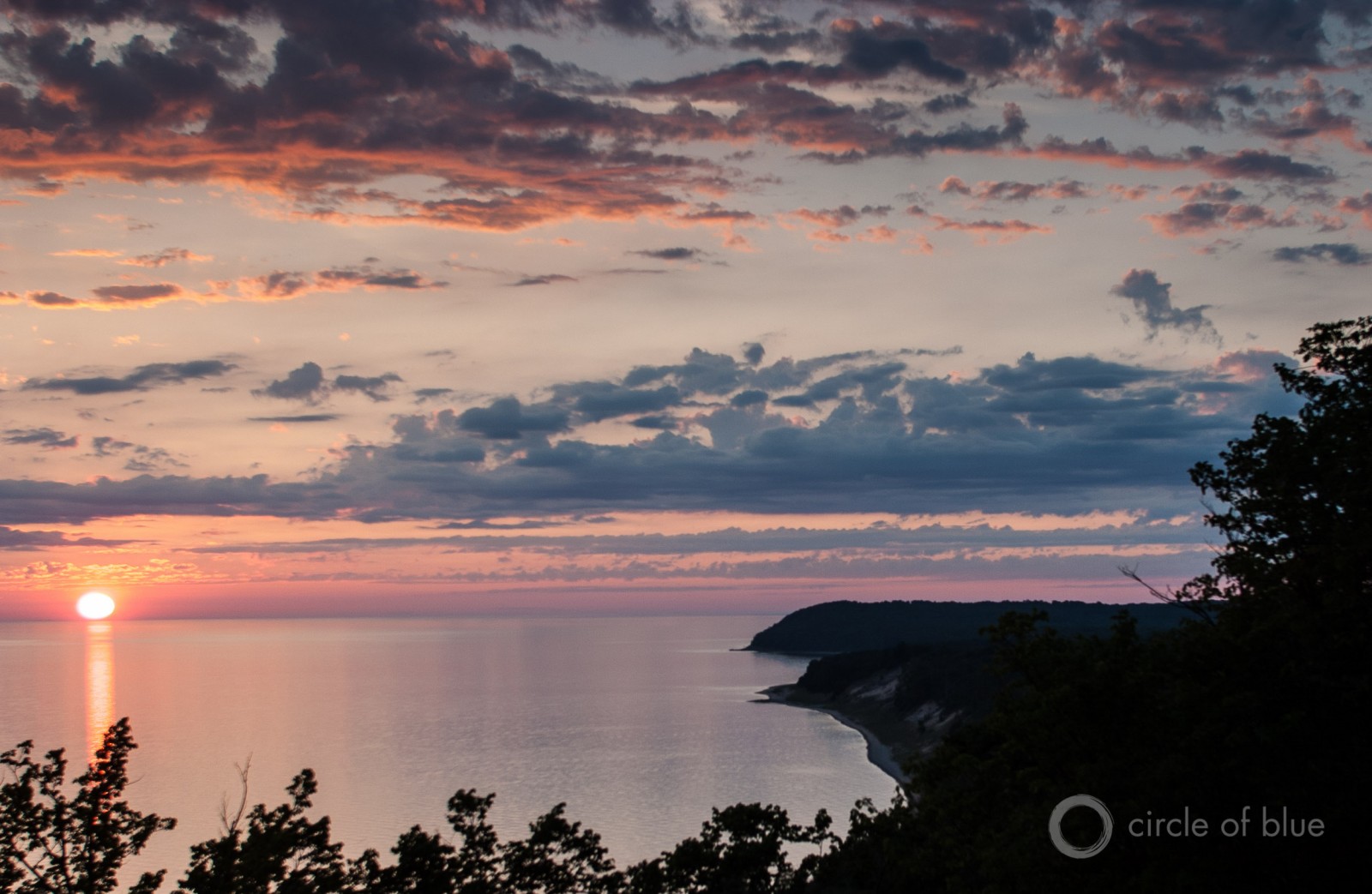
Michigan is reshaping its economy, putting renewed focus on natural resources like the Great Lakes. Photo © J. Carl Ganter / Circle of Blue
It is clear that Michigan residents currently view aquaculture as a serious threat to the lakes and the thriving tourism and recreational fishing industries they support. A separate poll conducted by the Lansing-based research firm EPIC-MRA in January found that 56 percent of the state’s residents opposed commercial fish farming in the Great Lakes, while only 17 percent said they supported it. In Ontario, expansion of the industry in Lake Huron has stalled over the past decade, though an additional five licenses are under review. Canadian environmental groups attribute the unofficial moratorium to environmental activism.
The prospect of Great Lakes aquaculture arises at a time when Michigan is reshaping its economy and trying to restore its “Pure Michigan” brand, which has been damaged in recent years by a big inland oil spill, lead-poisoned drinking water in Flint, and a 63-year-old pipeline that transports up to 540,000 barrels of crude daily across the Straits of Mackinac. Federal conservation programs like the Great Lakes Restoration Initiative, which enjoys strong regional support, also strive to heal old industrial wounds.
Michigan residents currently view aquaculture as a serious threat to the lakes and the thriving tourism and recreational fishing industries they support.
The focus on reviving a clean and natural version of Michigan would appear to move the needle in favor of keeping the Great Lakes off limits to aquaculture. At the same time, the emphasis on tourism has fueled a renaissance of local food, wine, and breweries in many of the state’s small towns and vacation destinations. Concerns about the inefficient, greenhouse gas-emitting production of beef and other meats has ratcheted up demand for seafood. In this context, regionally sourced fish grown in an environmentally sound manner could be a natural fit for Michigan and the Great Lakes region.
“I think that we as a people in Michigan need to come to grips with what our long-term food and economic expectations are,” Dan Vogler, president of the Michigan Aquaculture Association and a fish farmer in Harrietta, told Circle of Blue. “Do we really think it is sustainable not to grow our own food here?”
“Properly regulated, there isn’t a waste problem [from aquaculture], and it’s a very low input energy production system,” he added. “Property regulated, it can be profitable. Properly regulated, it turns out a fantastic protein product that is produced at a very effective food conversion ratio, better than chicken and better than pork. What part about that isn’t sustainable?”
Aquaculture in Lake Huron
In the maelstrom of rhetoric for and against aquaculture, both proponents and opponents agree there is a disturbing lack of scientific discussion available to help the public assess what large-scale fish farming would actually mean for the Great Lakes. Much of the scientific literature in Canada and the United States focuses on marine aquaculture along the coasts, or on land-based flow-through systems adjacent to rivers. Both have limited application to the type of freshwater net-pen aquaculture that is proposed for Michigan. In the United States, aquaculture in the Great Lakes is not even on the national radar.
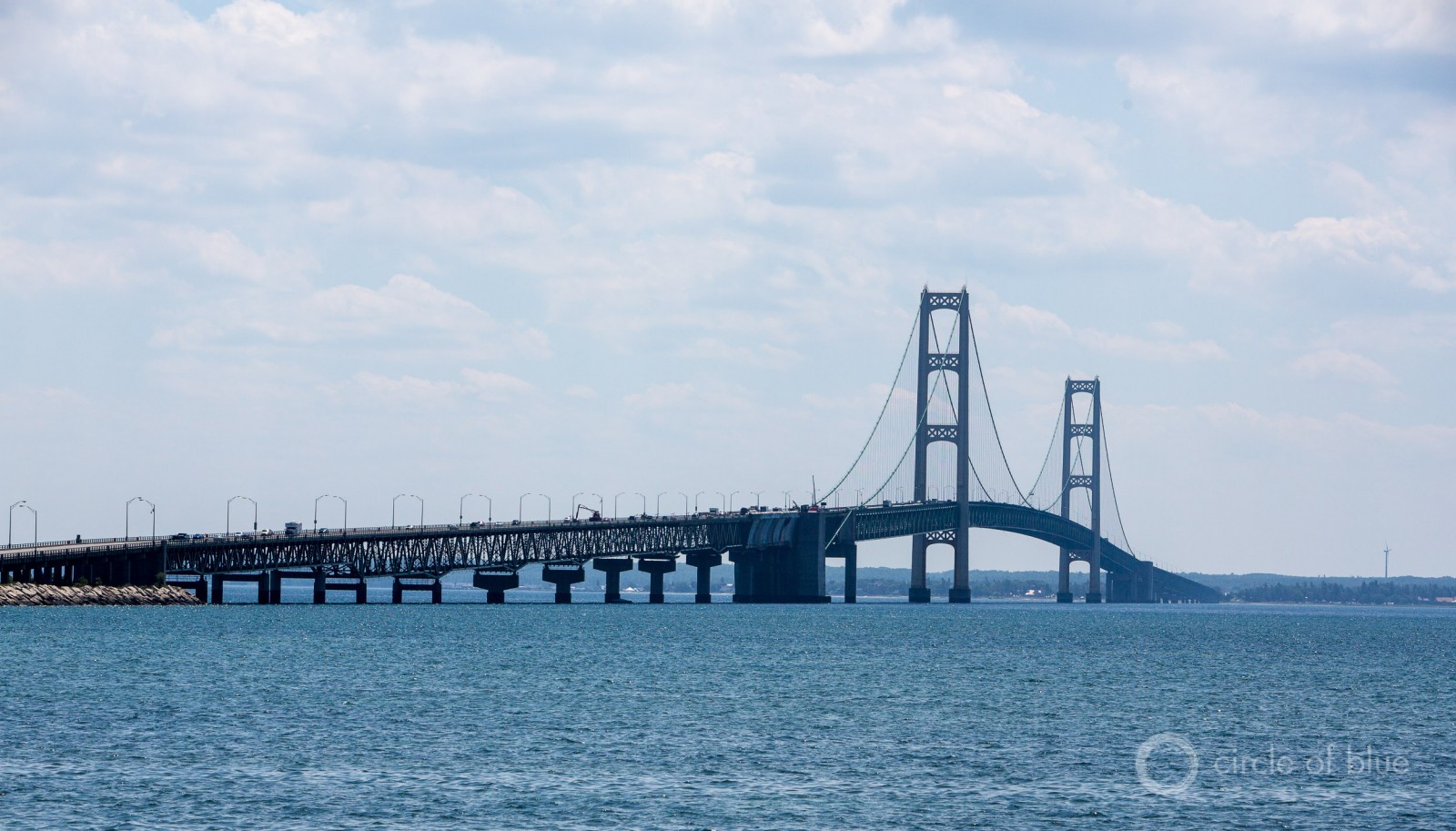
The “Pure Michigan” brand has been damaged in recent years by a big inland oil spill, lead-poisoned drinking water in Flint, and a 63-year-old oil pipeline under the Straits of Mackinac. It is unclear if aquaculture will be allowed in the state’s Great Lakes waters. Photo © J. Carl Ganter / Circle of Blue
That leaves the scattering of operations in Lake Huron as the only reference point from which to extrapolate the potential consequences of a larger Great Lakes aquaculture industry. Proponents point to the farms, some of which have operated for three decades, as evidence that fish farming can be done safely and with minimal consequences for water quality and wild fish health. But opponents say the same farms illustrate the inherent risk of net-pen aquaculture—that fish waste high in phosphorus is released directly to the surrounding water—and argue that there is evidence that wastes have degraded the health of coastal waters.
The scattering of operations in Lake Huron is the only reference point from which to extrapolate the potential consequences of a larger Great Lakes aquaculture industry.
For its part, Ontario’s Ministry of Natural Resources and Forestry (MNRF), the agency that heads aquaculture regulations, notes little problem with the industry.
“Any environmental violations are required to be reported to the ministry by the operator. Very few violations have occurred,” Jolanta Kowalski, senior media relations officer for the ministry, wrote in an email to Circle of Blue. “For example, there have been minor issues related to water quality but these have not been persistent in nature and have been resolved in each case.”
In one instance, however, declining water quality was worrying enough to shut down an aquaculture facility in LaCloche Channel, a stretch of Lake Huron’s North Channel. After public complaints were filed regarding algal blooms in the channel, a government survey in 1997 revealed that water quality had plummeted. Over an area of 250 hectares (617 acres), waters deeper than 13 meters (42 feet) were devoid of oxygen. Phosphorus levels had reached 40 micrograms per liter, eight times the amount recorded when aquaculture operations began in the mid-1980s, and algae blooms were visible. The problems were attributed to the poor siting of the farm in an area without adequate flushing of the surrounding waters. The farm was closed down by May 1998.
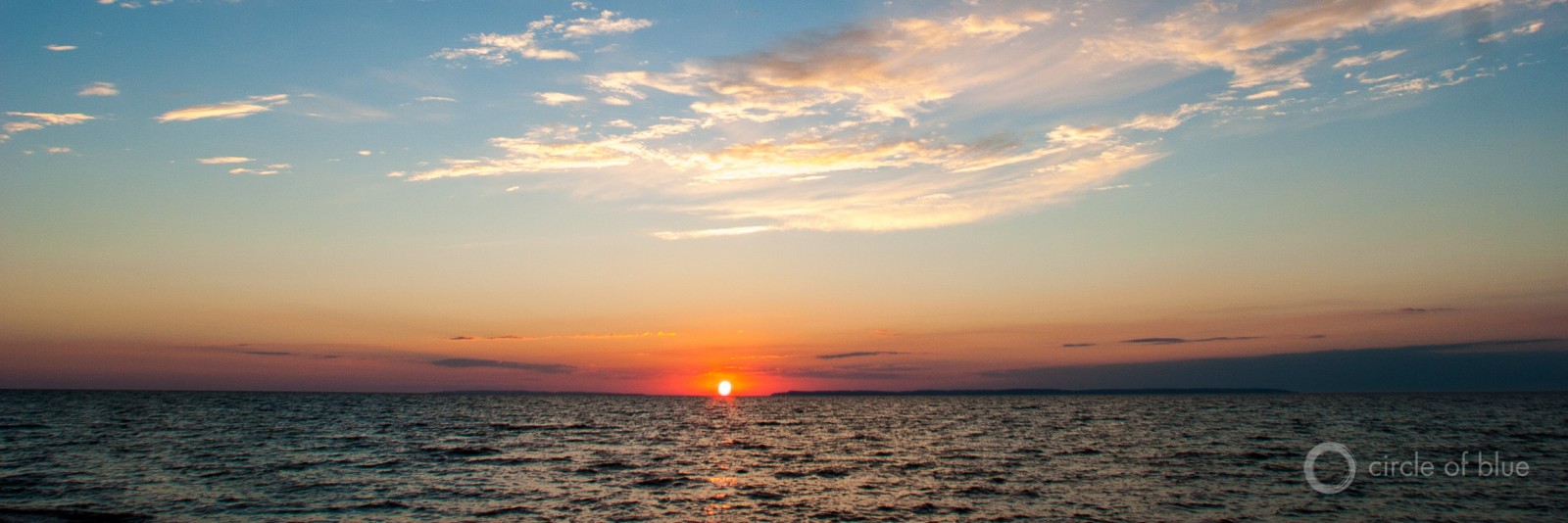
Most of the Ontario fish farms in Lake Huron appear to have decent environmental records, with the exception of one farm that was closed down in 1998. However, transparency about the industry is lacking, according to conservationists. Photo © J. Carl Ganter / Circle of Blue
A follow-up study of the other Lake Huron fish farms in 1998 found that they were generally operating within acceptable water quality limits, though it noted oxygen depletion 2 meters (6.5 feet) above the lake bottom at some sites and increased phosphorus levels near the perimeter of the net pens.
In the most recent assessment, a 2015 report by Canada’s Department of Fisheries and Oceans concluded that fish farms contribute only 5 percent of the annual phosphorus discharged to Lake Huron’s North Channel. The report characterized the overall risk to water quality from phosphorus released by aquaculture facilities as “low” at current levels of production, but cautioned that the growth of the industry should be carefully monitored and accounted for in annual limits on phosphorus discharges to the Great Lakes. It also emphasized the importance of farm siting decisions, noting that nearshore waters—where the existing farms are located—could be more susceptible to changes in phosphorus. It recommended exploring the option of siting farms further offshore.
Gaining Social License
Ontario requires regular water quality monitoring for phosphorus and dissolved oxygen levels near fish farms in the Great Lakes. Farm operators must submit detailed annual reports to the provincial government. But these results are not publicly available, leaving many open-ended questions about things like antibiotic use and fish escapes, according to Bob Duncanson, executive director of the Georgian Bay Association. The association is an environmental group representing residents living on the northern and eastern shores of Ontario’s Georgian Bay, the section of Lake Huron pinched off by Manitoulin Island and Bruce Peninsula, and has been fighting fish farms in the Great Lakes for 18 years.
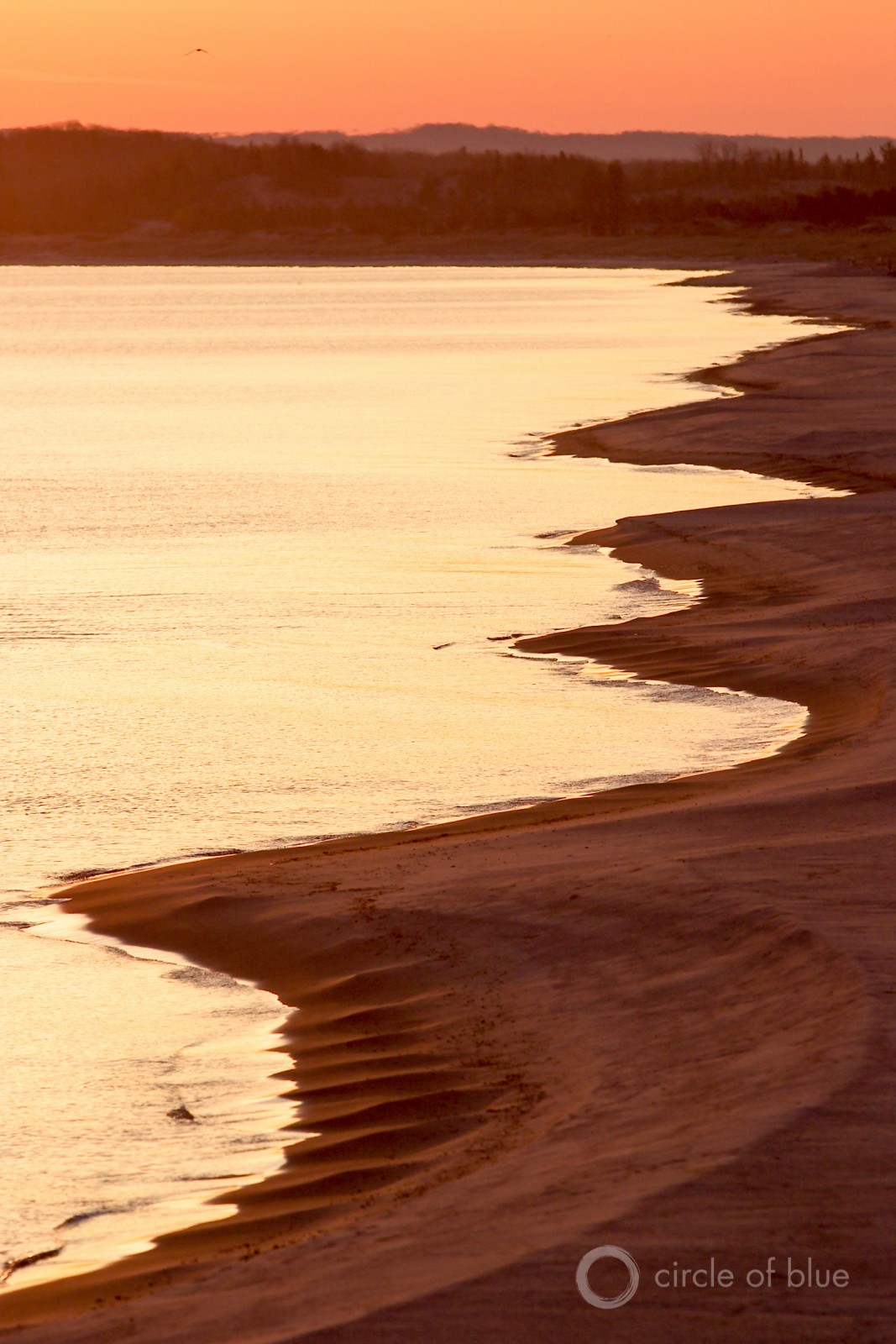
A series of eight bills, six in favor of aquaculture in the Great Lakes and two opposed, were introduced in the Michigan legislature over the past eight months. Photo © J. Carl Ganter / Circle of Blue
The association is also calling for the release of the results of a government inquiry into algal blooms in Lake Wolsey, a sheltered embayment of Lake Huron’s North Channel. The lake tested positive for toxin-producing cyanobacteria, commonly called blue-green algae, in September 2015. A cage-culture fish farm operating in Lake Wolsey is the second largest contributor of phosphorus to the lake’s waters, according to a 2015 study published in the journal Aquaculture Research. A previous study, published in 2002 in the Journal of Great Lakes Research, concluded that “in Lake Wolsey, the long-term effects of caged aquaculture at its current level of production are probably minimal but in the short-term could result in algal blooms and increased oxygen demand.”
“We say at some point they are going to hit a tipping point. We may not be there yet with some of these embayments where fish farms are located, but Lake Wolsey may be an example of where we’ve hit that tipping point,” Duncanson told Circle of Blue. “We’ve told the politicians they’re playing with fire here. At some point you’re not going to be able to continue to use public waters to dilute the pollution. It doesn’t hang together.”
Aquaculture’s future in the Great Lakes, which are a commonly held public resource, will ultimately come down to whether or not the region decides fish farming is in the public’s interest. Transparency is key to gaining that social license, says Duncanson. While his group is no longer seeking the immediate closure of existing farms in Lake Huron, its members are not convinced that expanding Great Lakes aquaculture is a good idea and welcomed the rebuttal from Michigan’s task force.
“They are getting free use of a public resource, so we argue that everything that goes on in the fish farms should be available,” Duncanson said. “We’re their landlords. We should know what’s going on. Do we just trust the MNRF? No. They’re an elected governing body, but they haven’t proven transparent and forthcoming either.”
“[The operators] file their results with the government and it goes into a black hole,” he added. “We would like to see and have access to that information and let our scientist have a look at that information.”
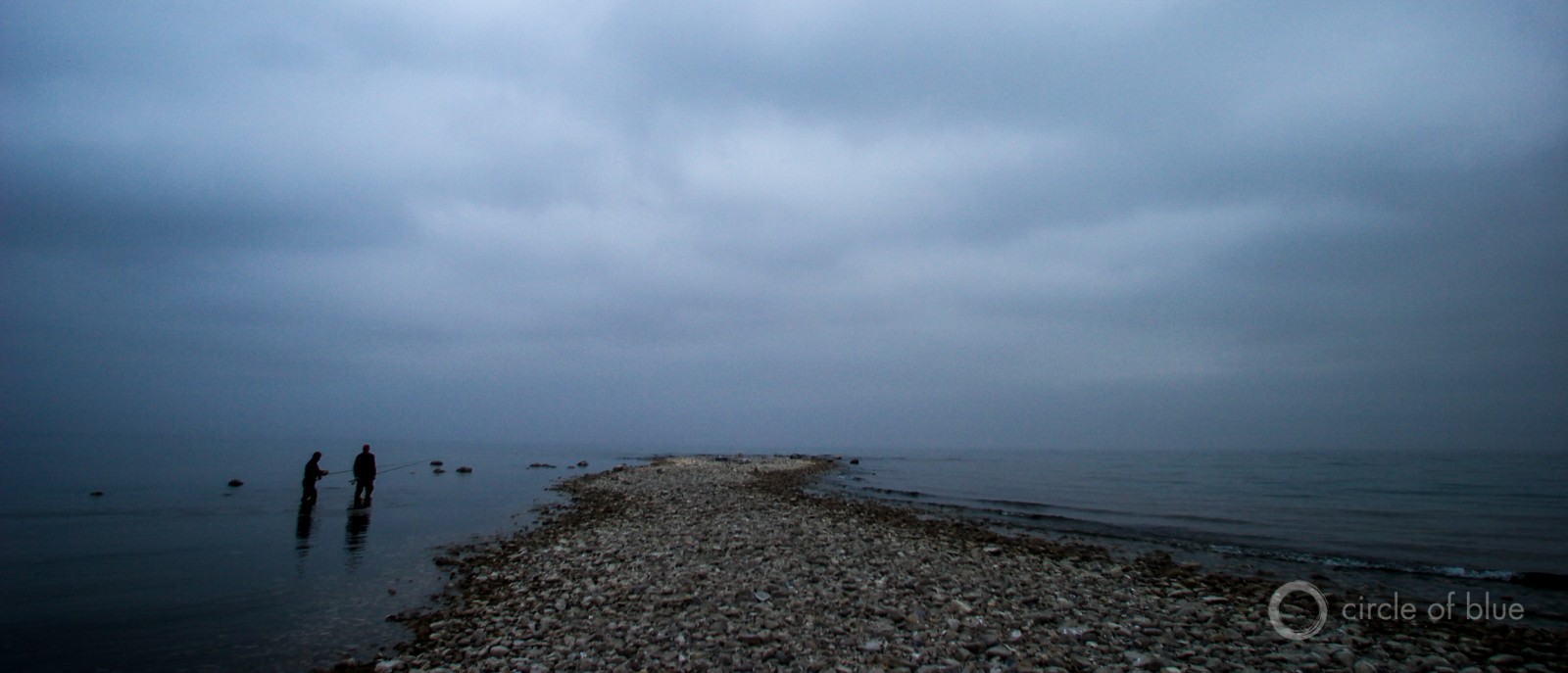
Recreational fishing interests have been some of the strongest opponents of aquaculture in Michigan. Proponents of the industry argue that aquaculture is equally deserving of the right to use Great Lakes water. Photo © J. Carl Ganter / Circle of Blue
The pushback remains frustrating to fish farmers, who see the expansion of the industry in the Great Lakes as not only an economic opportunity, but also as a way to provide a high-quality, sustainable product to local markets. Currently, most fish available to consumers in the grocery store is sourced from fish farms abroad—places like Chile and China—where environmental and health standards are lower than in Canada and the United States. And as the global population expands and demand for food grows, aquaculture is set to be a key component of feeding the planet.
As the global population expands and demand for food grows, aquaculture is set to be a key component of feeding the planet.
“Wouldn’t it be good to know that going into the future we have enough regional production of local product to feed our own needs, and that we’re not reliant on countries half a world away for our fresh seafood? Is that not a societal value that would be supported by net pen aquaculture in a public resource?” said Dan Vogler. “People want to eat local, as locally as possible, and that’s good for the environment. Nobody in the environmental community ever argues with me on that. So how do you have local fish if you don’t have local fish production? If we want local fish production, public trust resources are just part of the equation.”
A news correspondent for Circle of Blue based out of Hawaii. She writes The Stream, Circle of Blue’s daily digest of international water news trends. Her interests include food security, ecology and the Great Lakes.
Contact Codi Kozacek

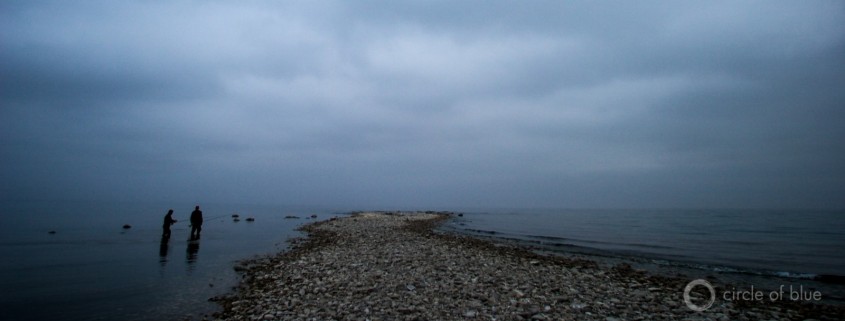

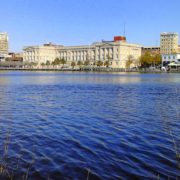

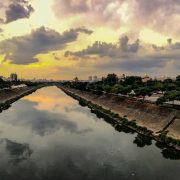
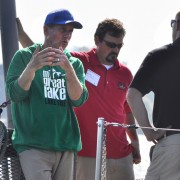
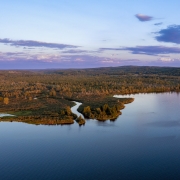



Leave a Reply
Want to join the discussion?Feel free to contribute!